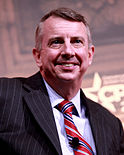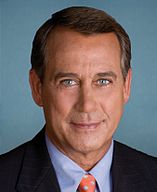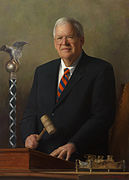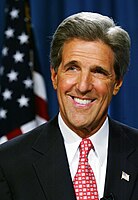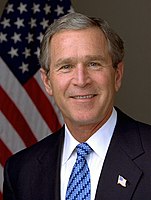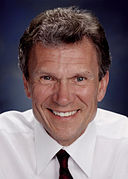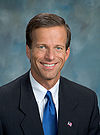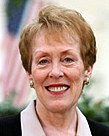User:GerGOP/sandbox/A Struggle for Power
| [[File:Flag_of_the_United_States_Senate.svg
| flag alias-|50px|border|link=|alt=]] | |||||||||||||||||||||||||||||||||||||||||||||||||||||||||||||||||
| |||||||||||||||||||||||||||||||||||||||||||||||||||||||||||||||||
33 of the 100 seats in the U.S. Senate and 3 mid-term special elections 51 seats needed for a majority | |||||||||||||||||||||||||||||||||||||||||||||||||||||||||||||||||
|---|---|---|---|---|---|---|---|---|---|---|---|---|---|---|---|---|---|---|---|---|---|---|---|---|---|---|---|---|---|---|---|---|---|---|---|---|---|---|---|---|---|---|---|---|---|---|---|---|---|---|---|---|---|---|---|---|---|---|---|---|---|---|---|---|---|
| |||||||||||||||||||||||||||||||||||||||||||||||||||||||||||||||||
File:2014AlternateSenateMap300.png | |||||||||||||||||||||||||||||||||||||||||||||||||||||||||||||||||
| |||||||||||||||||||||||||||||||||||||||||||||||||||||||||||||||||
| |||||||||||||||||
| |||||||||||||||||
| |||||||||||||||||
| ||||||||||||||||||||||||||||||||||
All 435 seats in the United States House of Representatives and 5 (of the 6) non-voting members 218 seats needed for a majority | ||||||||||||||||||||||||||||||||||
|---|---|---|---|---|---|---|---|---|---|---|---|---|---|---|---|---|---|---|---|---|---|---|---|---|---|---|---|---|---|---|---|---|---|---|
| Turnout | 36.5% | |||||||||||||||||||||||||||||||||
| ||||||||||||||||||||||||||||||||||
| ||||||||||||||||||||||||||||||||||
A HOUSE DIVIDED
| |||||||||||||||||||||||||||||||
All 435 seats in the United States House of Representatives and 5 non-voting members 218 seats needed for a majority | |||||||||||||||||||||||||||||||
|---|---|---|---|---|---|---|---|---|---|---|---|---|---|---|---|---|---|---|---|---|---|---|---|---|---|---|---|---|---|---|---|
| |||||||||||||||||||||||||||||||
| |||||||||||||||||||||||||||||||
| |||||||||||||||||||||||||||||
538 members of the Electoral College 270 electoral votes needed to win | |||||||||||||||||||||||||||||
|---|---|---|---|---|---|---|---|---|---|---|---|---|---|---|---|---|---|---|---|---|---|---|---|---|---|---|---|---|---|
| Turnout | 56.7%[2] | ||||||||||||||||||||||||||||
| |||||||||||||||||||||||||||||
| |||||||||||||||||||||||||||||
| ||||||||||||||||||||||||||||||||||
34 of the 100 seats (Class 3) in the United States Senate 51 seats needed for a majority | ||||||||||||||||||||||||||||||||||
|---|---|---|---|---|---|---|---|---|---|---|---|---|---|---|---|---|---|---|---|---|---|---|---|---|---|---|---|---|---|---|---|---|---|---|
| ||||||||||||||||||||||||||||||||||
| ||||||||||||||||||||||||||||||||||
| |||||||||||||||||||||||||||||
538 members of the Electoral College 270 electoral votes needed to win | |||||||||||||||||||||||||||||
|---|---|---|---|---|---|---|---|---|---|---|---|---|---|---|---|---|---|---|---|---|---|---|---|---|---|---|---|---|---|
| |||||||||||||||||||||||||||||
| |||||||||||||||||||||||||||||
| ||||||||||||||||||||||||||
| ||||||||||||||||||||||||||
| ||||||||||||||||||||||||||
| |||||||||||||||||
| |||||||||||||||||
| |||||||||||||||||
| |||||||||||||||||
| |||||||||||||||||
| |||||||||||||||||
| Battle of Camp Stalwart | |||||||
|---|---|---|---|---|---|---|---|
| Part of Iraq War | |||||||
 US soldiers take up positions during the Battle of Camp Stalwart, October 29th,2004 | |||||||
| |||||||
| Belligerents | |||||||
|
| |||||||
| Commanders and leaders | |||||||
|
| Unknown | ||||||
| Strength | |||||||
|
| 400+ al-Qaeda militants (U.S. estimate) | ||||||
| Casualties and losses | |||||||
|
US: 41 killed 17 wounded Iraq: 41 troops and policemen killed |
268 militans killed, unknown number of woundeds 61 civilians killed, 24 injured | ||||||
- ^ a b Haas, Karen L. (March 9, 2015). "Statistics of the Congressional Election of November 4, 2014". Office of the Clerk. U.S. House of Representatives. Retrieved February 22, 2016.
- ^ "Voter Turnout in Presidential Elections". Presidency.ucsb.edu. Retrieved 2016-08-18.
- ^ "Federal Elections 2004: Election Results for the U.S. President, the U.S. Senate and the U.S. House of Representatives" (PDF). Federal Election Commission. May 2005. Retrieved November 20, 2012.




